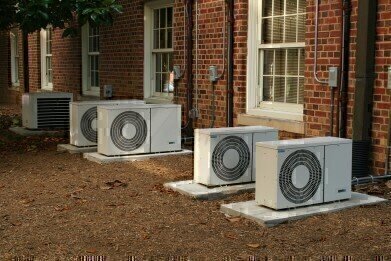Air Clean Up
Is Air Con Responsible for Increased Pollution?
May 19 2017
A new study published in the journal Environmental Science & Technology has established a link between increased air conditioning use on warmer days and elevated levels of air pollution.
The report, released on May 3rd 2017, analysed data taken from air quality monitoring stations in 27 US states (mostly in the east of the country) and found that concentrations of nitrogen oxides (NOx), sulphur dioxide (SO2) and carbon dioxide (CO2) sprang up on days with warmer weather.
Quantifying the problem
In the past, much research has been conducted to determine how climatological changes affect atmospheric chemistry, but very little has been done to investigate how temperature fluctuations specifically affect air pollution.
With this in mind, a team of researchers led by Tracey Holloway (a professor of environmental studies at the Nelson Institute) decided to explore the correlation between increased use of air conditioning and the three gases named above. Using a dataset of 26 eastern states and Texas from 2003 and 2014, they noted that intensified use of cooling systems in buildings caused a greater strain on the electricity grid.
This, in turn, made the concentrations of NOx, SO2 and CO2 in the surrounding areas increase as well.
By the numbers
Holloway’s team found that for every degree (Celsius) of increased temperature, the emissions of NOx rose by 3.6%. For SO2, that figure was 3.35%, while for CO2, it was 3.32%. All three are known contaminants, with the first two gases responsible for causing and exacerbating a wide range of respiratory problems, and the latter a greenhouse gas (GHG) which contributes heavily towards global warming.
Although more stringent regulations and enhanced Air Quality Control Systems (ACQS) have served to reduce emissions on the whole over the 11-year-period in question, the study shows that people’s lungs are still at risk – especially during the warmer months in summertime.
Interestingly, the research also revealed that those states with the least overall emissions produce the greatest discrepancy in results when the temperature rises. This is attributed to the higher pollution capacity of older and less regulated facilities, which are only employed on hot days when electricity demand is at its peak.
The way forwards
How to address the situation? Well, the US already has a robust emissions control framework in place, similar to the Industrial Emissions Directive (IED) that regulates industry in the UK. As well as making sure that those standards are met by all power plants and energy generation facilities, there is also scope for more research to be undertaken.
“Our next step is to compare the impact of electricity emissions with other factors affecting pollution formation - especially chemistry, natural emissions, and wind patterns,” explained Holloway. “We'd like to be able to say how these processes interact. For example, relative to other factors controlling pollution formation, how important is the response of emissions from power plants?”
Away from the power plant, architects and building officials should also seek to make their structures more energy efficient, to minimise the use of electricity and thus limit the need for air conditioning (or heating) when the climate does become inclement.
Events
May 05 2024 Seville, Spain
May 13 2024 Munich, Germany
May 23 2024 Beijing, China
May 23 2024 Beijing, China
Jun 10 2024 Algiers, Algeria














